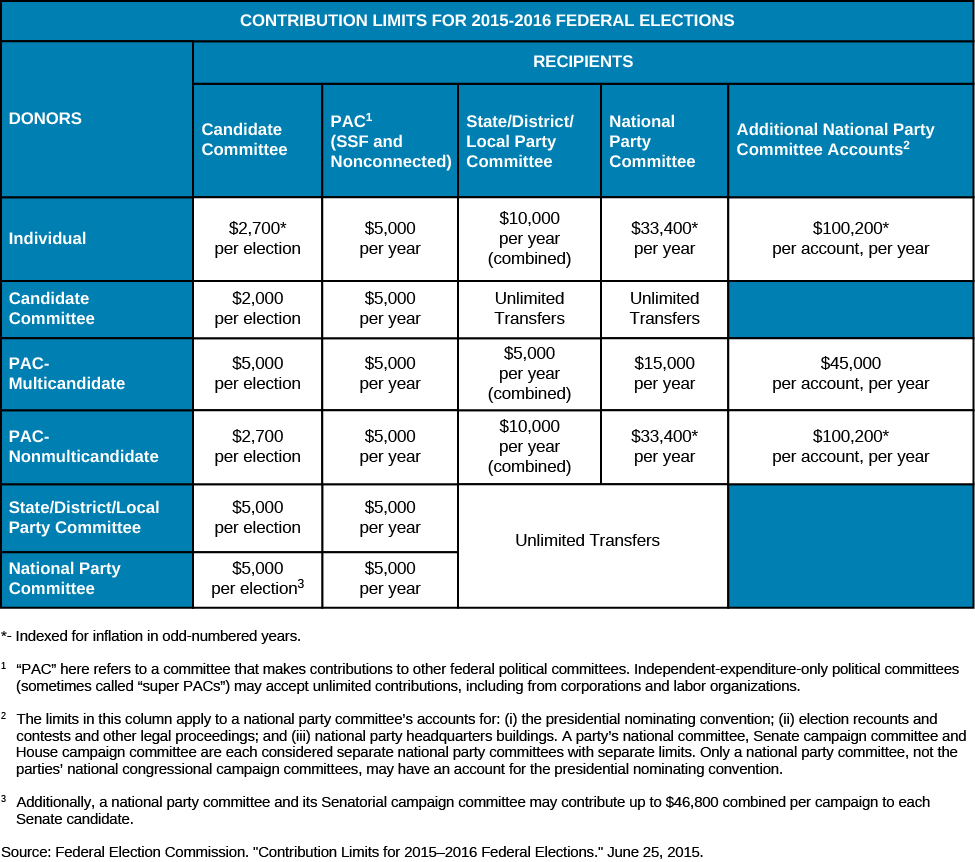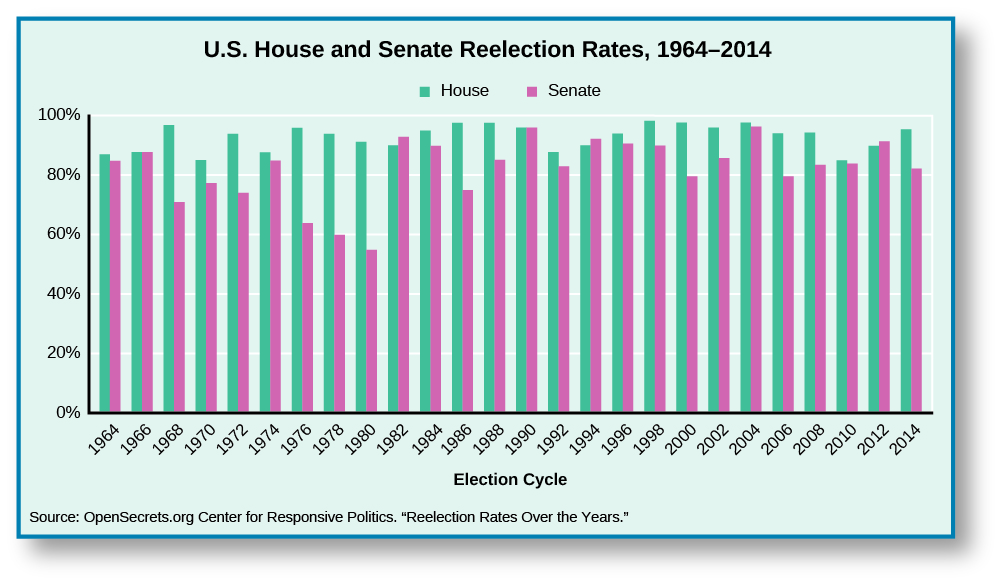| << Chapter < Page | Chapter >> Page > |

The Center for Responsive Politics reports donation amounts that are required by law to be disclosed to the Federal Elections Commission. One finding is that, counter to conventional wisdom, the vast majority of direct campaign contributions come from individual donors, not from PACs and political parties.
Not surprisingly, the jungle of campaign financing regulations and loopholes is more easily navigated by incumbents in Congress than by newcomers. Incumbents are elected officials who currently hold an office. The amount of money they raise against their challengers demonstrates their advantage. In 2014, for example, the average Senate incumbent raised $12,144,933, whereas the average challenger raised only $1,223,566.

The historical difficulty of unseating an incumbent in the House or Senate is often referred to as the incumbent advantage or the incumbency effect . The advantage in financing is a huge part of this effect, but it is not the only important part. Incumbents often have a much higher level of name recognition. All things being equal, voters are far more likely to select the name of the person they recall seeing on television and hearing on the radio for the last few years than the name of a person they hardly know. And donors are more likely to want to give to a proven winner.
But more important is the way the party system itself privileges incumbents. A large percentage of congressional districts across the country are “safe seats” in uncompetitive districts, meaning candidates from a particular party are highly likely to consistently win the seat. This means the functional decision in these elections occurs during the primary, not in the general election. Political parties in general prefer to support incumbents in elections, because the general consensus is that incumbents are better candidates, and their record of success lends support to this conclusion. That said, while the political parties themselves to a degree control and regulate the primaries, popular individual candidates and challengers sometimes rule the day. This has especially been the case in recent years as conservative incumbents have been “primaried” by challengers more conservative than they.

Notification Switch
Would you like to follow the 'American government' conversation and receive update notifications?